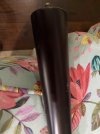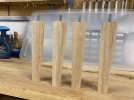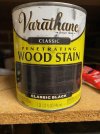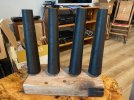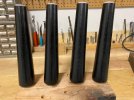I have a neighbor who picked up a chair with missing legs from a swap shop. I offered to make square legs because I have never turned wood on a lathe but I the more I thought about it, I decided round legs are a better choice because the legs are screw-on and a square leg would probably end up mis-aligned and look bad. My question is - when should the hole be drilled in the leg to receive the mounting bolt? (3/8" - 16 threaded rod). My plan is to drill the hole in the blank, epoxy the rod in place and mount the rod in the lathe for turning. This way the rod would be perfectly parallel to the leg center. Can a threaded rod be inserted in a wood lathe for turning? If not, what is the best plan? The legs are 10" long and ~2.25" at the big end and an example from another chair is shown below.
Attachments
Last edited:

